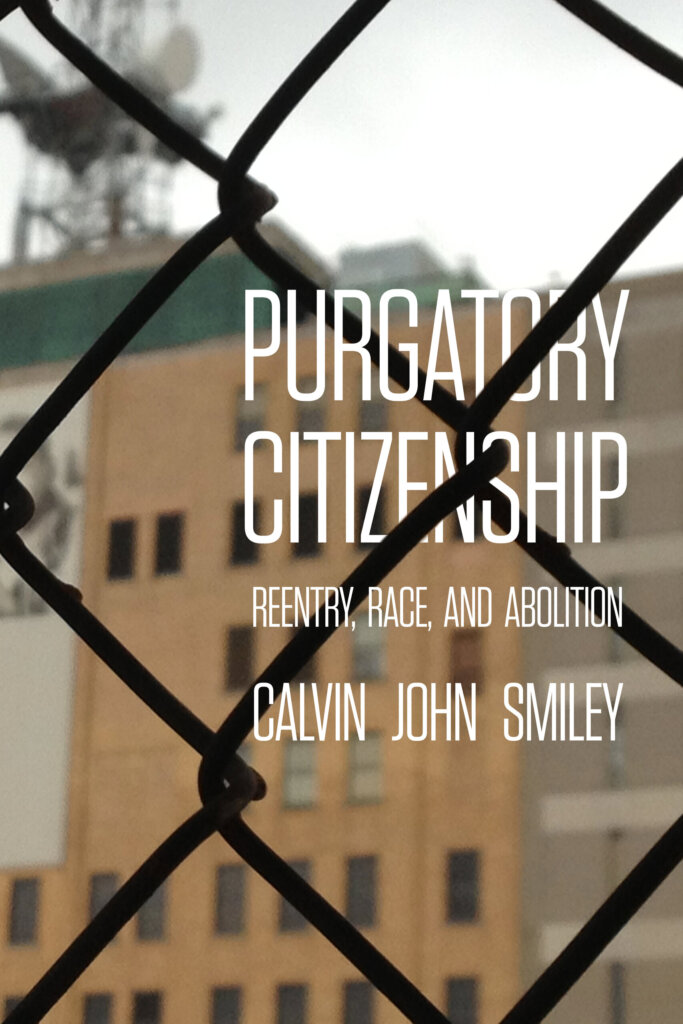By Calvin John Smiley, author of Purgatory Citizenship: Reentry, Race, and Abolition
Every year, millions of people cycle in and out of American penal institutions. For many, it might be a few days or weeks in a local jail but for others it could be years or even decades in a prison. Melvin, a Black man in his early fifties, spent more than half his life inside a state prison when I met him in 2010. Like so many individuals I met during my years volunteering at a community-based reentry organization, he was coming back to a different world and had to do reentry—a series of rituals, ceremonies, tasks, and other activities as part of the return process to society. Compounding this effort was the fact that he was convicted of a felony and had to navigate and negotiate his reentry because of diminished legal rights and amplified social stigmas.

Purgatory Citizenship is an ethnographic telling of men and women’s experiences in their reentry. Leaving prison is often not the end as reentry is part of an entangled web of the criminal legal system in the United States. In other words, reentry is not the termination but extension of carceral penalty. The concept of ‘purgatory’ offers to highlight how individuals released from incarceration are in a sort of limbo, somewhere between confinement but not totally free but rather tethered to a legal system that imposes fines, fees, regulations, and other stipulations to retain this quasi-emancipation.
When I began this research in 2010, there were both professional and personal reasons that led me to this study. Professionally, I had already been actively involved in the anti-death penalty movement, which brought me into the world of engaging with incarcerated folks. Beyond this, Michelle Alexander’s book, The New Jim Crow, was released and a game-changer in the way that Americans began to think and address what has become known as “mass incarceration.” In that same year, prison releases exceeded prison admissions for the first time since the Bureau of Justice Statistics began keeping this data in 1977. In sum, reentry was no longer simply as an academic exercise but a reality. Personally, this was the year my father and I had first spoken in almost a decade. As a formerly incarcerated individual, he came back into my life as I began graduate school. In hindsight, it was serendipitous as our own healing and relationship very much involved discussing his incarceration and reentry. Therefore, I came to reentry from the perspective of an activist, academic, and son of a justice-impacted person.
This book unpacks and interrogates reentry through the narratives and experiences of those doing reentry. Each chapter focuses on various aspects of the reentry journey ranging from issues of employment, housing, and healthcare as well as discussing how mass incarceration and reentry underdevelops communities, modifies the body, and the need to create spaces for those returning to society. Finally, in recent years, several books have been released that explore reentry and the obstacles individuals face. However, this is the only social science book that offers an abolitionist perspective on reentry. In sum, this work is invested in putting reentry out of business as we must strive for alternative practices that no longer rely on carceral institutions that further harm but rather invest into social institutions that create care.
This post is part of our #ASA2023 blog series. Visit our virtual ASA 2023 website and find out how to get 40% off our books.